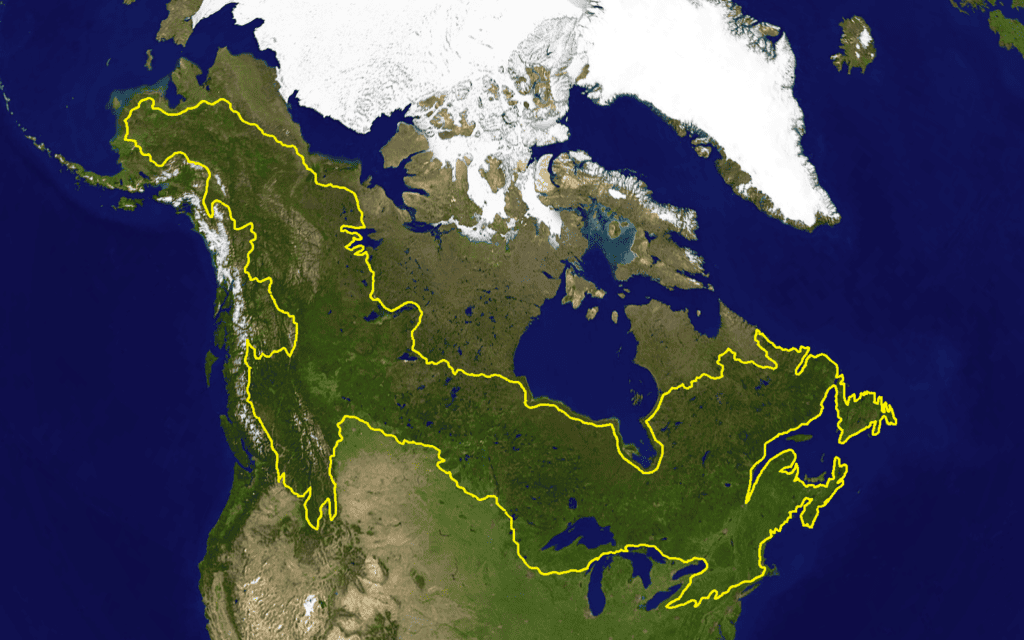Despite a summer of climate chaos, Pierre Poilievre is soaring in the polls without even having a climate plan
Peterborough Examiner – September 22, 2023 – by Drew Monkman
I recall writing an article in the 1990s about what it would take for people to really take the necessary action to protect the natural world. I came to the conclusion it would require one or more “environmental Pearl Harbors” –events severe enough to truly wake us up and to demand the requisite action from governments. I’m not sure I believe that anymore.
Conservative leader Pierre Poilievre now has an astonishing 15 point lead in the polls. How could this be, given the record heat, terrifying wildfires and choking smoke of this summer and the fact that he doesn’t even have a plan to address climate change? The same question applies to the election of Danielle Smith as Premier of Alberta at a time when the province was literally ablaze. Smith is at best indifferent to the climate crisis. Is it because people still don’t understand that we are facing potentially catastrophic impacts? How do we make sense of it all?
A chilling reality
The science of climate change and its impacts is complicated. Although climate models that aim to predict the future have proven extremely accurate, there has always been a degree of uncertainty as to how much additional heating – 1.5C? 3C? 6C? – would be required before some of the more devastating impacts would be felt. For a long time, we’ve taken this as a source of comfort, saying to ourselves, “Well, the scientists aren’t really sure and even if things get bad, it probably won’t happen for a long time.” However, the new reality is that scientific uncertainty should be a source of angst rather than comfort.
What the events of recent years – and particularly this summer – are showing is that devastating climate impacts are happening much sooner than expected. For example, much of the wildfire modeling didn’t suggest anything like the extent and severity of the fires in Canada this summer or even over the next few decades. Soaring ocean temperatures, too – four to six degrees above record levels – are at the extreme high end of what the models anticipated. This heating has huge implications for sea level rise, the melting of ice sheets, hurricanes, coral reefs, fish stocks and ocean currents. A study released in July found that the Gulf Stream could collapse between 2025 and 2095, if global carbon emissions are not reduced drastically. This would have catastrophic climate impacts, especially for Europe. The uncertainty as to when this might occur should not reassure us.
Tipping points
A particularly worrisome element of climate change is the concept of “tipping points”. They are parts of the Earth system that have the potential to change abruptly and irreversibly in response to warming – and with catastrophic consequences. You can think of the phenomenon as “the straw that broke the camel’s back”. Climate scientists have identified 15 or so tipping points with huge implications for the climate, for ecosystems, for economies and for people. They essentially determine the fate of the planet. It now appears that the amount of heating necessary to tip some of these systems is much lower than initially thought. It’s possible that some tipping points may have already been crossed, like those of the Greenland ice sheets, the Amazon rainforest and warm-water coral reefs.
A tipping point in Canada and across the top of the northern hemisphere is the potential collapse of the boreal forest. It represents 30% of the world’s forests and is a crucially important store of carbon, both in the trees and in the soil. Wildfires result in carbon being released from both sources. Wildfire-related emissions so far this summer are at least double all other sources of greenhouse gases in Canada. What’s even more frightening is that about a third of the boreal forest is underlain by permafrost, a frozen carbon and methane store estimated to contain 2.5 times more carbon than there is in the global atmosphere. Repeated extreme fire events are now understood to play a disproportionate role in melting permafrost and thereby releasing stored carbon and methane.
Categories of how people react to climate change
How do you square the severity of the climate crisis with what appears to be a lack of public support for urgent action? There’s another question, too. Why is it that people almost never talk about climate change with friends and family? Simply sharing your concerns with others is considered one of the most important individual actions anyone can take.
Here’s what research by the Yale Program on Climate Change Communication has found. People in the United States – and almost certainly in Canada – can be categorized into six distinct groups. The Alarmed (26%) are convinced climate change is happening, human-caused, an urgent threat, and strongly support climate policies. The Concerned (27%) generally agree with the above but tend to believe that climate impacts are still distant in time and space, thus the issue remains a lower priority. The Cautious (17%) have not yet made up their minds about what to think. The Disengaged (7%) know little to nothing about climate change. The Doubtful (11%) don’t think climate change is happening or believe it is just a natural cycle. And the Dismissive (11%) are convinced climate change is not happening, human-caused, or a threat, and oppose most climate policies.
Given that the Alarmed still represent a minority, I guess it’s not surprising that having a serious climate plan isn’t a prerequisite to getting elected. Add to this the fact that half of Canadians live paycheck to paycheck and are facing growing inflation, skyrocketing food costs and a lack of available, affordable and adequate housing.
There are other factors at play, too. Many people are increasingly mistrustful of experts and no longer believe the messages of scientists or government officials. Many believe that any actions they might take personally – including how or if they vote – would be too small to make a difference. But probably the biggest obstacle to pro-environmental behaviour is simply habit. Ingrained behaviors like the kind of lifestyle people lead are extremely resistant to change. Anything that threatens this like climate policies that may impact lifestyle – a carbon tax, for example – meet resistance.
As a society, we also seem less and less able to think long-term. Despite being saturated in information, we are still stuck in short-termism: a collective failure to escape the present moment and look further ahead. You see it in business, in our four-year election cycles, and in populist politics like the kind Poilievre excels at.
Given all that I’ve laid out so far, it’s not surprising that a new category of how people see climate change is emerging. Let’s call them the Collapse Aware. These are people who believe the same things as the Alarmed category but are convinced it’s simply too late to do anything about it. They are convinced that civilization as we know it is on the road to collapse. Many feel that the fundamental problem isn’t even climate change but rather “ecological overshoot”. This refers to human demands exceeding what the planet can safely supply and regenerate. In other words, it means treating the planet like a limitless resource. They see climate change as one repercussion of our faith in limitless growth.
Some positive news
It would be unfair to end on an entirely negative note because there’s another story going on, too. The solutions we need to slow down climate change and usher in a carbon-zero future already exist. Wind and solar energy now regularly out-compete fossil fuels in most regions of the world. Electric vehicle growth, too, could reach a 90% market share by 2030 if sustained. This green transition is happening faster than almost anyone believed possible just a few years ago. The question, however, is can the change happen fast enough? The answer is definitely “no” if we don’t elect the right politicians.
In other somewhat positive news, scientists now believe that the amount of warming this century won’t be as severe as previously thought – two or three degrees Celsius instead of four or five. Keep in mind, though, that just the present 1.2C of warming is causing havoc.
We must also remember that it will never be entirely too late to take action. It will always be better to keep temperature rise as low as possible. Limiting it to 2°C is better than 2.5°C, but better than both of these is keeping it below 1.5°C.
So, here’s the bottom line as laid out by the International Panel on Climate Change (IPCC) in its Sixth Assessment Report from March of this year. To limit warming to about 1.5C, maintain livable conditions on Earth and enable stable societies, we need to cut yearly global emissions by 43% from 2019 levels by 2030. However, even if countries achieved their current climate pledges, emissions would decrease by only 7%. Our only chance of doing better is to collectively wake up to the severity of the climate crisis and to put the right politicians in office.

